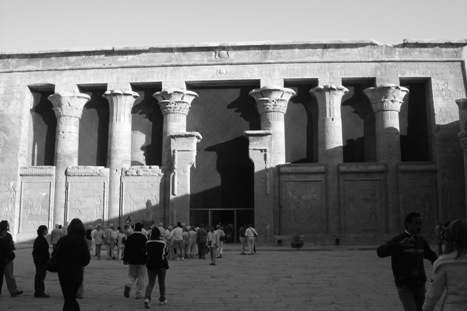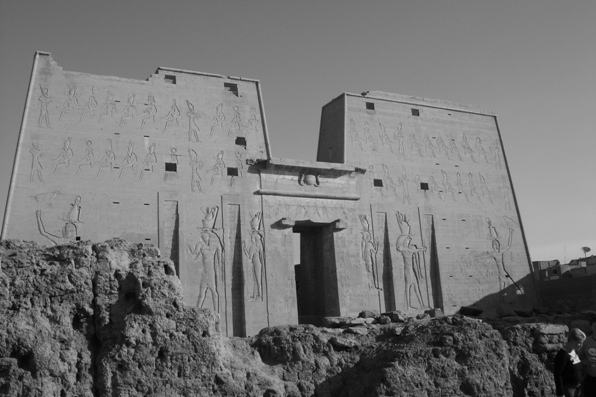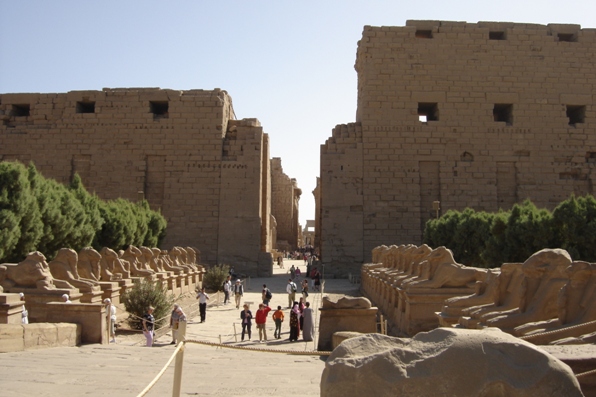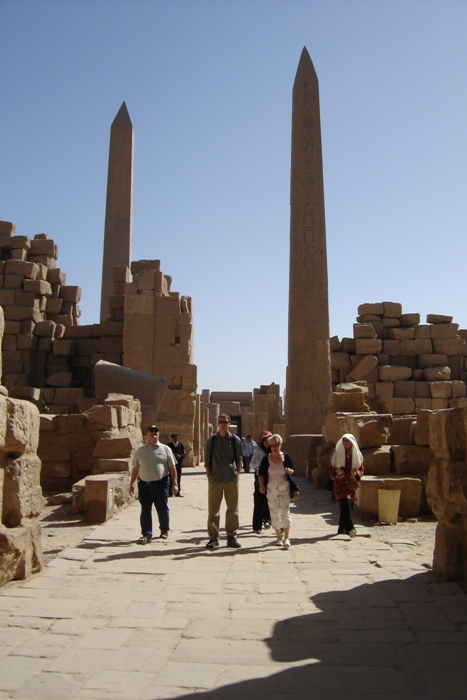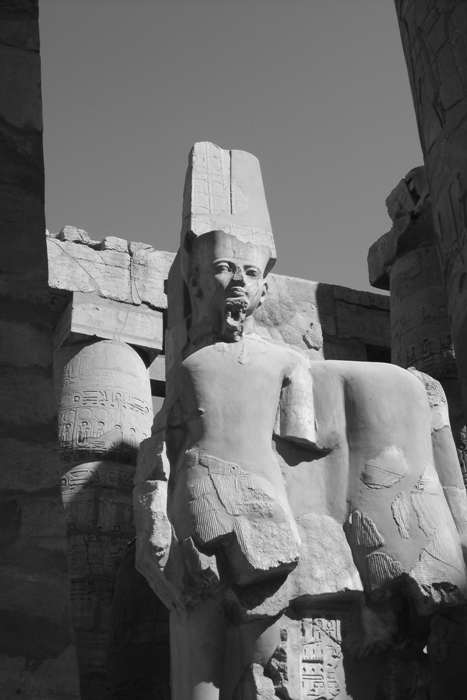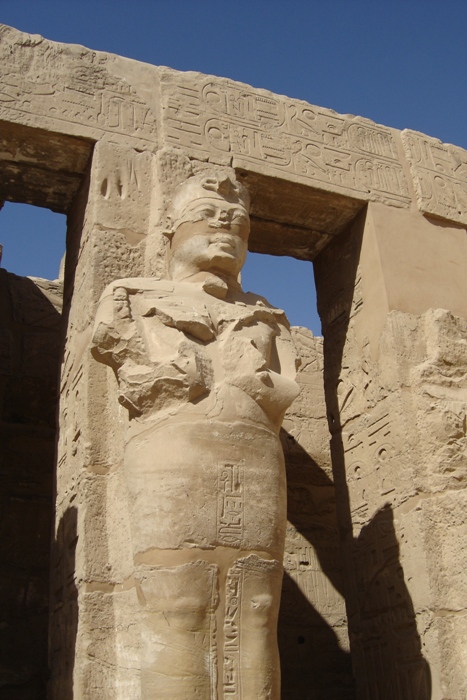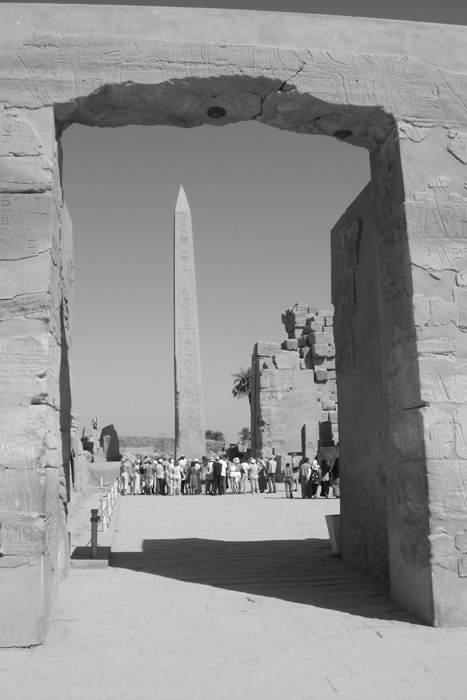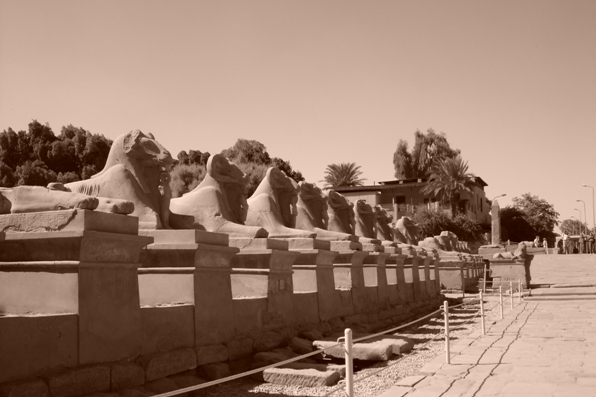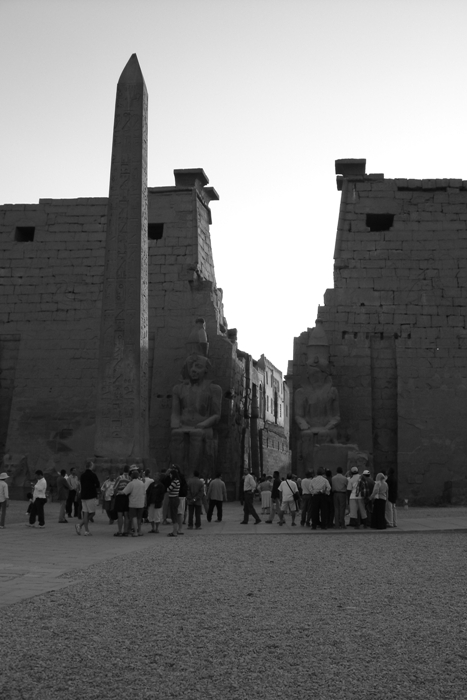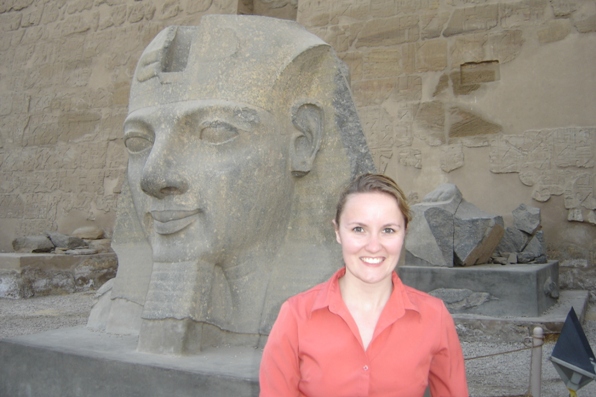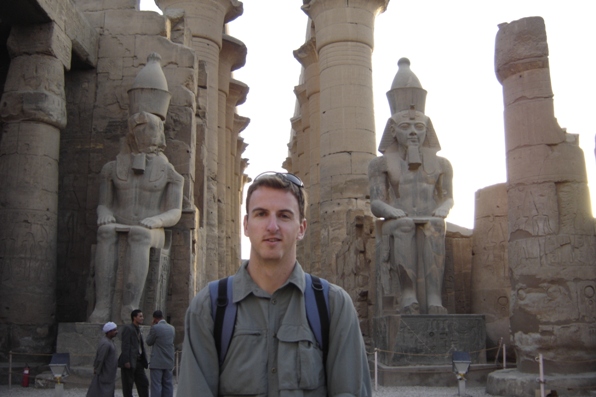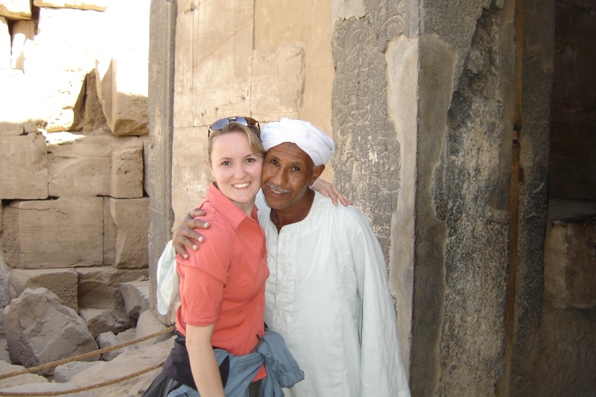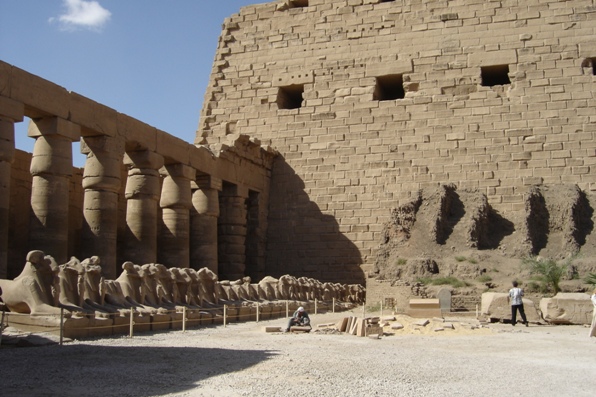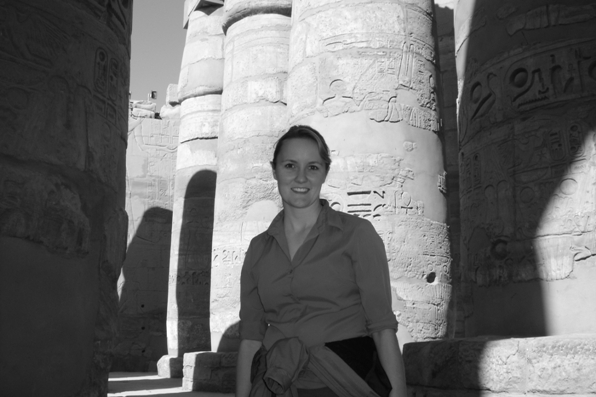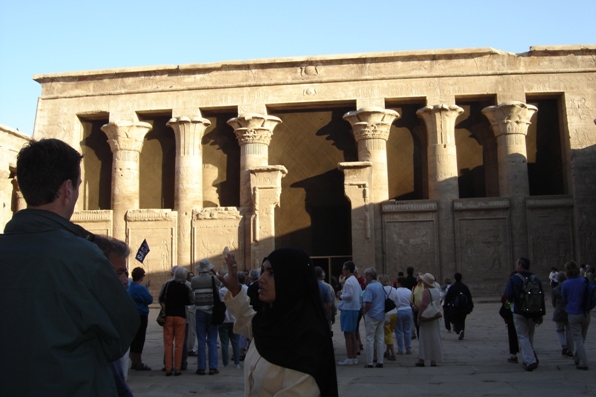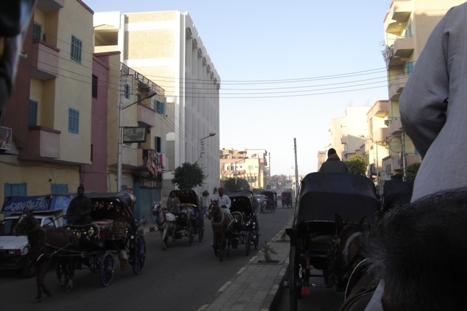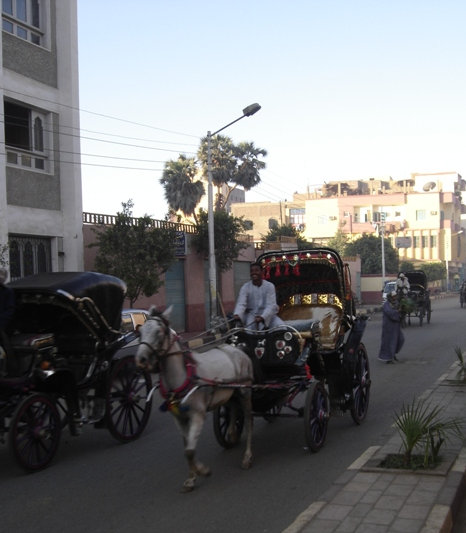www.willhiteweb.com - Hiking, Climbing and Travel
Thebes was located about 800 km south of the Mediterranean, on the east bank of the Nile River within the current modern city of Luxor. The Theban Necropolis and valleys of the Kings and Queens are situated nearby across the Nile on the West Bank. The two major temple complexes here are the Temple of Luxor and the Karnak Temple Complex.
The Luxor Temple Complex was founded in 1400 BC. It was known in the Egyptian language as ipet resyt, or "the southern sanctuary". The earliest parts of the temple still standing are the baroque chapels. The main part of the temple is the colonnade and the sun court. Later additions by Rameses II, who built the entrance pylon, and the two obelisks, one of which was taken to France, and is now at the centre of the Place de la Concorde. During the Roman era, the temple and its surroundings were a legionary fortress and the home of the Roman government in the area.
The Karnak Temple Complex comprises a vast mix of decayed temples, chapels, pylons, and other buildings. The Karnak complex takes its name from the nearby village of el-Karnak, 2.5 km north of Luxor. The complex is a vast open-air museum and the largest ancient religious site in the world. It is believed to be the second most visited historical site in Egypt, second only to the Giza Pyramids near Cairo. The key difference between Karnak and most of the other temples and sites in Egypt is the length of time over which it was developed and used. Approximately thirty pharaohs contributed to the buildings, enabling it to reach a size, complexity, and diversity not seen elsewhere. Few of the individual features of Karnak are unique, but the size and number of features are overwhelming. The deities represented range from some of the earliest worshiped to those worshiped much later in the history of the Ancient Egyptian culture. One famous aspect of Karnak, is the Hypostyle Hall which has an area of 50,000 sq ft with 134 massive columns arranged in 16 rows. 122 of these columns are 10 meters tall, and the other 12 are 21 meters tall with a diameter of over three meters.
The architraves on top of these columns are estimated to weigh 70 tons. These architraves may have been lifted to these heights using levers. This would be an extremely time-consuming process and also would require great balance to get to such great heights. A common alternative theory about how they were moved is that there were large ramps made of sand mud brick or stone and the stones were towed up the ramps. If they used stone for the ramps they would have been able to build the ramps with much less material. The top of the ramps presumably would have either wooden tracks or cobblestones for towing the megaliths.
Temples Of Ancient Thebes - Luxor
